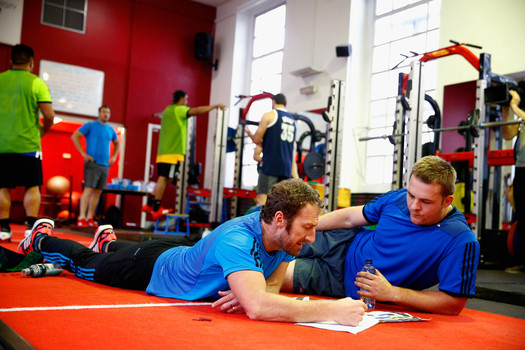Last Updated on January 23, 2024
If you’re looking to avoid “middle-aged spread,” physical activity is important, as is watching what you eat. But there’s no hard and fast rule as to how much activity you will need to keep your weight steady.
For general good health, the 2008 Physical Activity Guidelines for Americans recommends that adults get a minimum of 2-1/2 hours per week of moderate-intensity aerobic activity. (1) Yet many people may need more than 2-1/2 hours of moderate intensity activity a week to stay at a stable weight. (1) The Women’s Health Study, for example, recently followed 34,000 middle-aged women for 13 years to see just how much physical activity they needed to stay within 5 pounds of their weight at the start of the study. Researchers found that women who were in the normal weight range at the start of the study needed the equivalent of an hour a day of physical activity to stay at a steady weight. (2)
If you are exercising mainly to lose weight, 30 minutes or so a day may work if you’re careful about how much you eat. (3) If you don’t make an effort to trim calories or at least hold them steady, you would likely need to exercise much more—or more vigorously—to lose weight. (1)
Physical activity can also help people keep off the pounds that they have lost. (1) Among the nearly 3,700 men and women who are part of the National Weight Control Registry, a select club that includes only people who lost more than 30 pounds and kept them off for at least a year, the average participant burns an average of about 400 calories per day in physical activity. That’s the equivalent of about 60 to 75 minutes of brisk walking each day, or 35 to 40 minutes of daily jogging. (4) But there’s quite a bit of variation from participant to participant—some require more physical activity to keep the weight off, some require less.
In sum, while the precise amount of exercise needed to maintain or achieve a healthy weight may vary based on your diet and your genes, the American College of Sports Medicine and the American Heart Association conclude that “more activity increases the probability of success.” (5)
References
1. U.S. Dept. of Health and Human Services. 2008 Physical Activity Guidelines for Americans. 2008. Accessed December 2, 2010.
2. Lee IM, Djousse L, Sesso HD, Wang L, Buring JE. Physical activity and weight gain prevention. JAMA. 2010; 303:1173-9.
3. Jakicic JM, Marcus BH, Gallagher KI, Napolitano M, Lang W. Effect of exercise duration and intensity on weight loss in overweight, sedentary women: a randomized trial. JAMA. 2003; 290:1323-30.
4. Catenacci VA, Ogden LG, Stuht J, et al. Physical activity patterns in the National Weight Control Registry. Obesity(Silver Spring). 2008; 16:153-61.
5. Haskell WL, Lee IM, Pate RR, et al. Physical activity and public health: updated recommendation for adults from the American College of Sports Medicine and the American Heart Association. Med Sci Sports Exerc. 2007; 39:1423-34.
From Harvard School of Public Health







